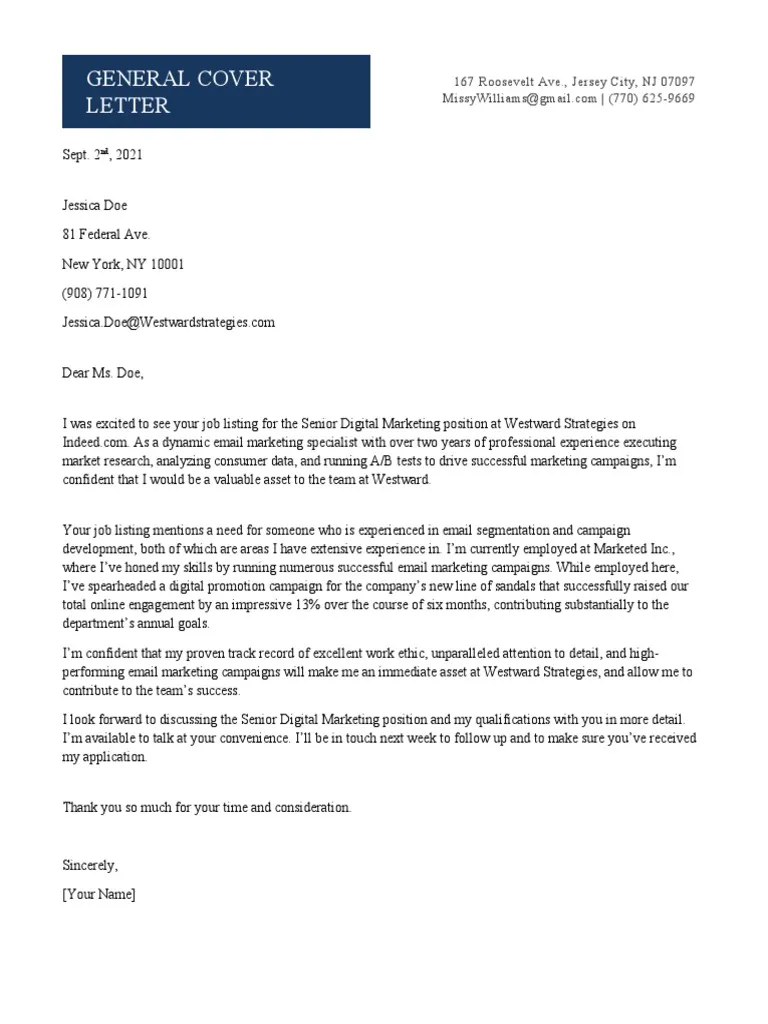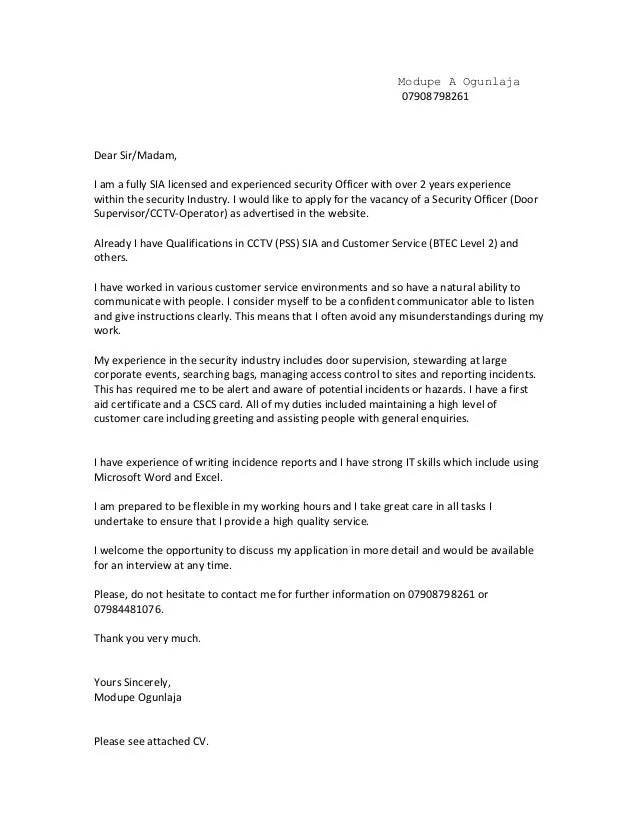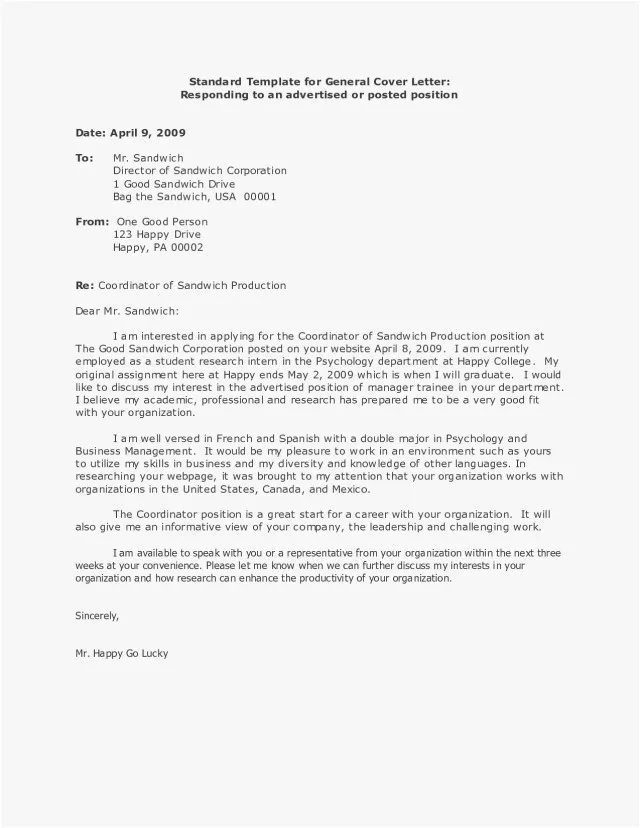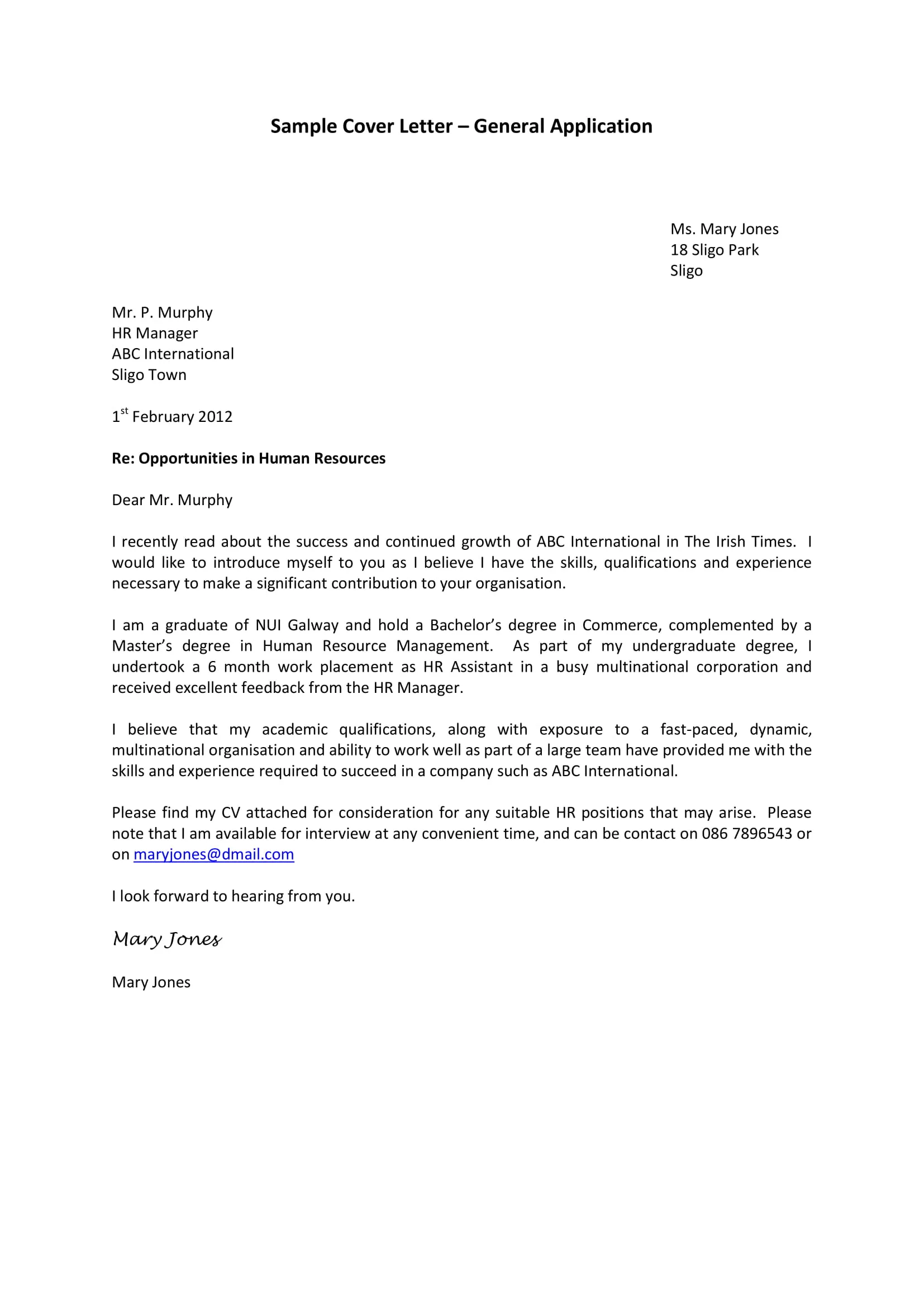What Is a Cover Letter and Why Is It Important?
A cover letter is a crucial document that accompanies your resume when applying for a job. Think of it as your personal introduction to a potential employer, a chance to showcase your personality, enthusiasm, and specific qualifications that make you the ideal candidate. Unlike a resume, which is a factual summary of your experience and skills, a cover letter allows you to tell a story, to explain why you are interested in the specific role and company, and to connect your experiences to their needs. Its importance cannot be overstated, as it often determines whether your resume even gets a second look. Without a well-crafted cover letter, your application might easily be overlooked, especially in a competitive job market where employers are inundated with applications. It’s your initial opportunity to make a positive impression and set yourself apart from other applicants.
Furthermore, a cover letter demonstrates your communication skills and attention to detail. It shows that you’ve taken the time to research the company and tailor your application to their specific requirements. This personalization is key because it conveys your genuine interest and commitment to the opportunity. A generic, mass-produced cover letter will likely be tossed aside, while a customized one can make the difference between getting an interview and being rejected. The cover letter is also an excellent opportunity to address any potential gaps in your resume, such as career changes, employment gaps, or a lack of direct experience. By framing these elements strategically, you can present a more compelling narrative about your candidacy and highlight the value you bring to the table.
Cover Letter Examples that Grab Attention
Creating a cover letter that immediately captures the reader’s attention is paramount to getting your foot in the door. Effective cover letters often start with a strong opening paragraph that immediately states the position you are applying for and expresses genuine enthusiasm for the opportunity and the company. Avoid generic openings like “I am writing to apply…” Instead, try a more engaging approach, such as highlighting a specific achievement or skill that aligns with the job requirements. For instance, you could begin by mentioning a successful project or a quantifiable result you achieved in a previous role, immediately demonstrating your value and ability. This helps to create an instant connection and encourages the reader to continue reviewing your application.
Another key element is to showcase your personality and passion for the role. While the letter should maintain a professional tone, injecting your personality can help you stand out. Describe what motivates you about the company’s mission, culture, or products. Use anecdotes or stories to illustrate your skills and experiences rather than simply listing them. For example, instead of stating “I have excellent communication skills,” you can describe a time when you successfully communicated a complex idea to a diverse group of stakeholders and the positive outcome that resulted. Including a “hook” that hints at unique value, a specific skill match, or how you align with the company’s values can make your cover letter more compelling. This personalized approach shows that you’ve done your homework and truly want to be part of the team.
Highlighting Your Skills and Experience

The body of your cover letter is where you highlight your skills and experience in a way that is relevant to the job description. Begin by thoroughly reviewing the job posting and identifying the key skills and qualifications the employer is seeking. Then, structure your letter to directly address these requirements, providing specific examples from your past experiences that demonstrate your ability to meet them. Don’t just list your skills; instead, provide context. Use the STAR method (Situation, Task, Action, Result) to tell compelling stories that show how you’ve used your skills to achieve positive outcomes in previous roles. This approach allows the hiring manager to visualize you in the role and understand how you can contribute to their team.
Quantifying your accomplishments whenever possible is crucial. Rather than saying, “I improved sales,” state “I increased sales by 15% in one quarter.” This gives concrete evidence of your capabilities and makes your claims more credible. When discussing your experience, focus on what you achieved and how you did it. Use action verbs to describe your responsibilities and the impact of your work. Tailor your examples to match the language and keywords used in the job description. This shows that you understand the role and are well-suited to perform its duties. Highlighting relevant experiences and demonstrating how you can apply your skills to the specific job are key to making a strong case for your candidacy.
Cover Letter Structure and Formatting
The structure and formatting of your cover letter play a significant role in its readability and impact. Start with a professional heading that includes your contact information (name, phone number, email address, and optionally, your LinkedIn profile URL). Then, include the date and the recipient’s contact information (hiring manager’s name and title, company name, and address, if possible). A well-formatted cover letter is easy to read and visually appealing. Choose a clear and professional font, such as Arial or Times New Roman, with a font size of 11 or 12 points. Use single spacing within paragraphs and double spacing between paragraphs to provide visual breaks and improve readability. Keep the letter concise; aim for a maximum of one page, usually around 250-400 words.
Divide your cover letter into logical sections. Start with an engaging opening paragraph, followed by 2-3 body paragraphs highlighting your skills and experience. The final paragraph should include a strong call to action, reiterating your interest and expressing your eagerness to discuss your qualifications further. Maintain a professional tone throughout, avoiding slang or overly casual language. Proofread carefully for any grammatical errors or typos, as these can detract from your credibility. Use clear and concise language to convey your message. Ensuring your cover letter is well-structured and properly formatted demonstrates your attention to detail and professionalism.
Cover Letter Do’s and Don’ts
There are several essential “do’s” to keep in mind when crafting a cover letter. Always tailor your cover letter to the specific job and company you are applying for. Research the company and highlight how your skills and experience align with their needs and values. Proofread carefully for any grammatical errors or typos, and ask someone else to review your letter as well. Use action verbs and quantify your accomplishments whenever possible to showcase your impact. Keep the tone professional and positive, expressing enthusiasm for the opportunity. Be sure to include a call to action, expressing your interest in an interview and providing your contact information.
Conversely, there are several pitfalls to avoid. Do not use generic, mass-produced cover letters, as they demonstrate a lack of interest and effort. Avoid simply repeating your resume; instead, provide additional context and tell a story. Do not exceed one page in length, and make sure your formatting is clean and easy to read. Avoid using overly casual language, slang, or unprofessional email addresses. Do not mention salary expectations unless specifically asked, and refrain from negative comments about past employers or colleagues. By avoiding these common mistakes, you can significantly increase the effectiveness of your cover letter and improve your chances of landing an interview.
Cover Letter Examples for Different Industries

Cover letters need to be adapted to suit the industry and the specific type of job. For example, a cover letter for a creative role, like a graphic designer, might include a portfolio link and focus heavily on visual examples of your work, showcasing your design skills. In contrast, a cover letter for a finance position should emphasize analytical skills, attention to detail, and any experience with financial modeling or reporting. The language used should reflect the industry’s norms and the specific responsibilities of the role. Furthermore, your tone and style should align with the company’s culture and industry standards.
For the tech industry, cover letters should highlight technical skills, project experience, and any contributions to open-source projects or personal projects. A cover letter for a sales position needs to showcase your sales skills, communication abilities, and any experience in closing deals or meeting sales targets. Cover letters for education and healthcare should emphasize your experience, your passion for helping others, and your understanding of regulatory compliance. To make sure your cover letter is appropriate, review job descriptions and successful cover letter examples to learn industry conventions. Make sure you always address the specific requirements of the job to get the best possible outcome.
Cover Letter Examples for Entry-Level Positions
Entry-level cover letters often focus on transferable skills, education, and relevant experiences. Since applicants often lack extensive work experience, it’s important to highlight any internships, volunteer work, academic projects, or extracurricular activities that demonstrate relevant skills. Highlight your skills to align with the job’s requirements. For instance, communication, teamwork, problem-solving, or organizational skills are often sought after. Show your initiative and enthusiasm for the role and the company, emphasizing your eagerness to learn and grow. If you have limited professional experience, frame your cover letter to show your adaptability, willingness to take on challenges, and your genuine interest in the industry.
Tailor your cover letter to reflect your strong desire to develop a career. Mention any relevant coursework or skills. You can also include academic awards or any other achievements that showcase your abilities. Focus on the value you can bring to the company. By highlighting transferable skills and presenting a well-structured, engaging cover letter, you can make a strong first impression even if you don’t have a lot of prior work experience. Take advantage of every opportunity to show that you’re a quick learner, enthusiastic, and eager to contribute to the team.
Cover Letter Examples for Mid-Career Professionals
Mid-career professionals should leverage their cover letters to showcase a history of success, leadership skills, and relevant experience. Your letter should highlight key accomplishments from your previous roles, with specific examples and quantifiable results. You can show how you’ve increased revenue, improved efficiency, or led successful projects. Focus on leadership experience, team management skills, and your ability to work with diverse teams. Emphasize your professional development and career progression. Showing how your skills and experience are relevant to the job’s requirements is key. Adapt your cover letter to align with the target role and the company’s culture.
Tailor your cover letter to demonstrate your ability to take on complex challenges and bring significant value to the company. Show you have the ability to adapt to new situations and contribute to the company’s strategic goals. Include any professional certifications or additional skills that will make you stand out as a top applicant. By highlighting your previous achievements and focusing on your ability to contribute at a high level, you can make a strong case for your candidacy and secure a job in your chosen industry.
Cover Letter Examples for Career Changers

If you’re transitioning careers, your cover letter should focus on transferable skills and emphasize how your previous experiences align with the target role. Start by identifying the skills and experiences that are transferable from your previous career to the new field. Then, highlight these transferable skills, providing examples of how you applied them in your previous roles and how they can be relevant in your new field. Address any gaps in your experience and show why you’ve made a career change. Express your enthusiasm and genuine interest in the new industry.
Frame your career change positively, highlighting what motivates you. Mention any relevant courses, certifications, or additional education. Be sure to tailor your cover letter to show your deep interest in the new role. Show that you’ve done your research on the company. Be sure to demonstrate your adaptability, willingness to learn, and capacity to quickly contribute to the team. With a well-crafted cover letter, you can demonstrate your passion for the new field and show employers why they should consider your application.
How to Tailor Your Cover Letter
Tailoring your cover letter is crucial to demonstrate to employers that you have put the time and effort into the application. Start by carefully reviewing the job description, highlighting the key skills, qualifications, and responsibilities. Customize your cover letter to directly address these requirements, providing specific examples of your skills and experiences that align with each point. Research the company to show your interest in the role, by mentioning its mission, values, or recent projects, demonstrate you understand the company’s goals. By showing genuine interest in the role and the company, you can convince the hiring manager that you are a good fit and that you have the right approach.
Show that you have reviewed the job posting and customized your approach by using keywords and phrases from the job description. Highlight any skills or experiences that are particularly relevant. Customize the tone of your cover letter to match the company culture and the role’s requirements. By tailoring your cover letter, you can increase your chances of making a positive impression and getting invited for an interview. Make sure every cover letter is customized and reflects the specific requirements of the role, to leave a lasting impression.
Tips for Proofreading and Editing Your Cover Letter
Proofreading and editing your cover letter is a critical step. Carefully proofread your cover letter for grammatical errors, spelling mistakes, and typos. Even minor mistakes can detract from your credibility. Read your cover letter aloud to catch any awkward phrasing or sentences that don’t flow smoothly. Ask a friend, family member, or career advisor to review your cover letter for feedback on its clarity and impact. The second pair of eyes will often catch errors that you might miss. Make sure your cover letter reflects your best efforts and showcases you as a strong candidate.
Ensure the tone and style of your cover letter align with the company’s culture and industry standards. Confirm that your contact information is correct and your formatting is consistent and professional. The cover letter should be concise, easy to read, and free of errors. The goal is to demonstrate your attention to detail and professionalism. By proofreading carefully and getting feedback from others, you can create a polished cover letter that helps you get the job.
